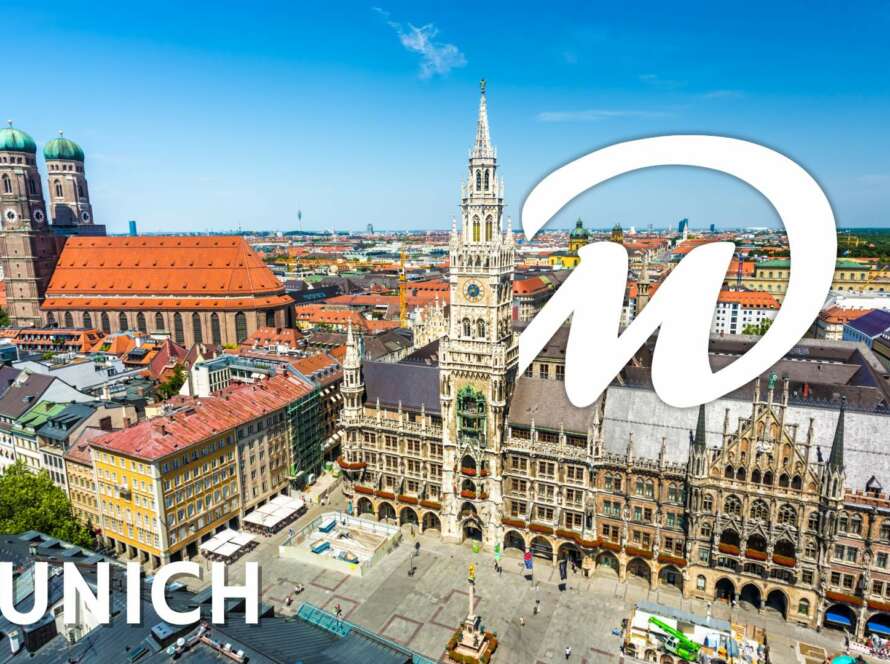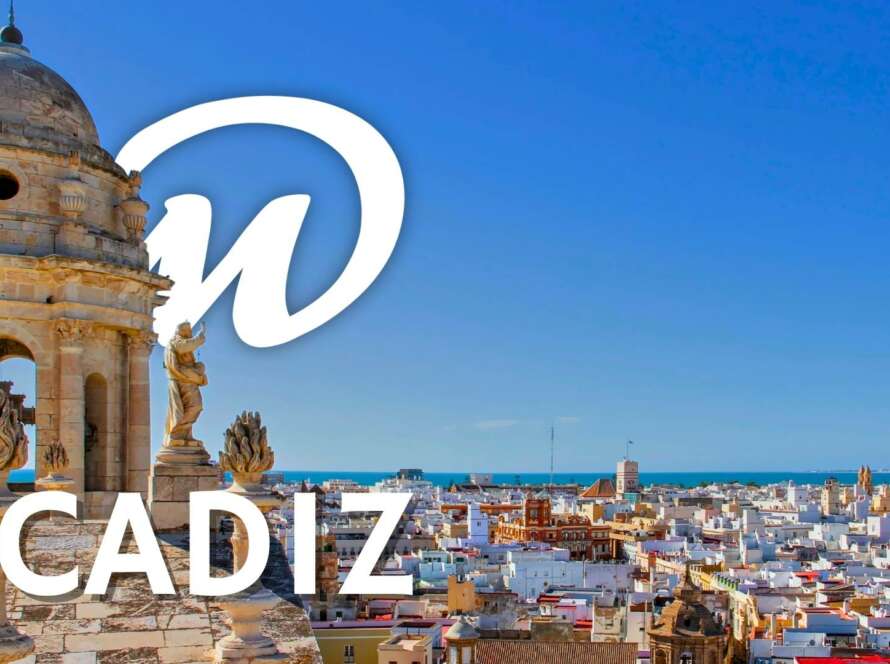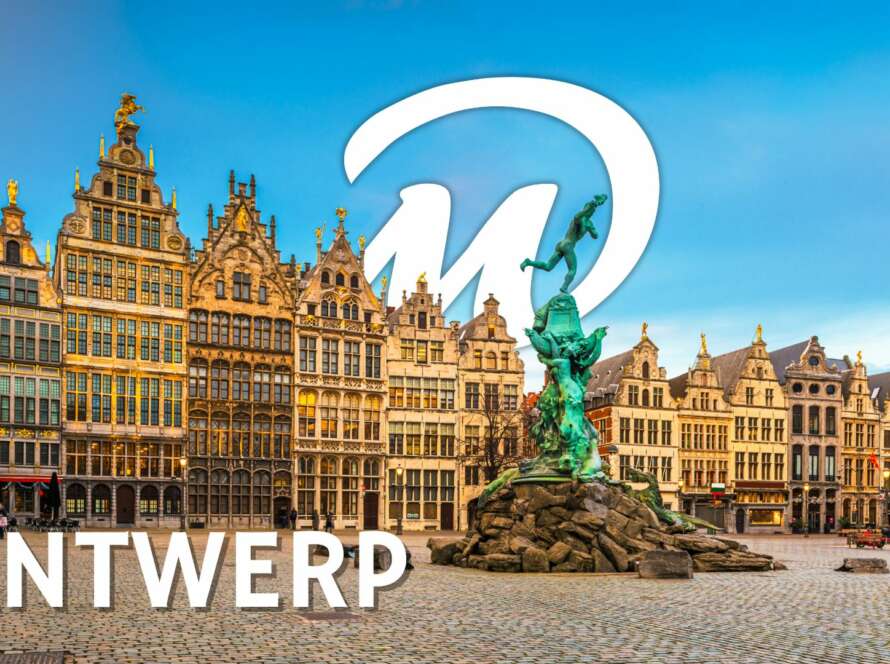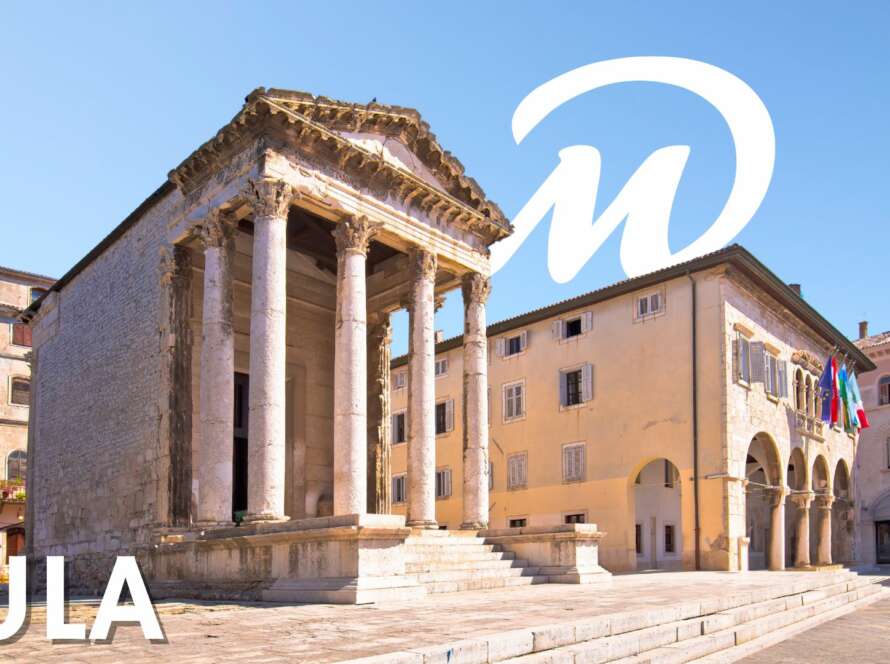Arévalo is a picturesque town located in the province of Ávila, in Castilla y León, Spain. Known for its impressive Mudejar architecture, Arévalo captivates with its churches, palaces and houses built with brick and adorned with intricate wooden details. The town is particularly famous for its Plaza de la Villa, a space that encapsulates the region’s rich medieval history, surrounded by historic buildings and dominated by the church of Santa María la Mayor.
We tell you things to do in Arévalo, a Castilian town rich in history and culture with a great monumental legacy.
Arévalo has roots dating back to pre-Roman times, but gained prominence during the Middle Ages when it became an important military and political centre. The town was an important enclave during the Reconquest, and its strategic location at the confluence of the rivers Adaja and Arevalillo strengthened its position.
For visitors, Arévalo offers an enchanting mix of history, art and gastronomy. Strolling through its cobbled streets you can discover ancient churches, quiet squares and an atmosphere that transports you back to medieval times.
In addition to its architectural beauty, Arévalo is a cultural centre that celebrates numerous festivals and events throughout the year, highlighting its local gastronomy, especially roast suckling pig, the region’s star dish. With a heritage that includes a 15th century castle and multiple Romanesque and Gothic churches, Arévalo offers a unique window into Spain’s historical and cultural past, attracting tourists and history buffs from all over the world.
Things to do in Arévalo. Key points.
Zuñiga Castle
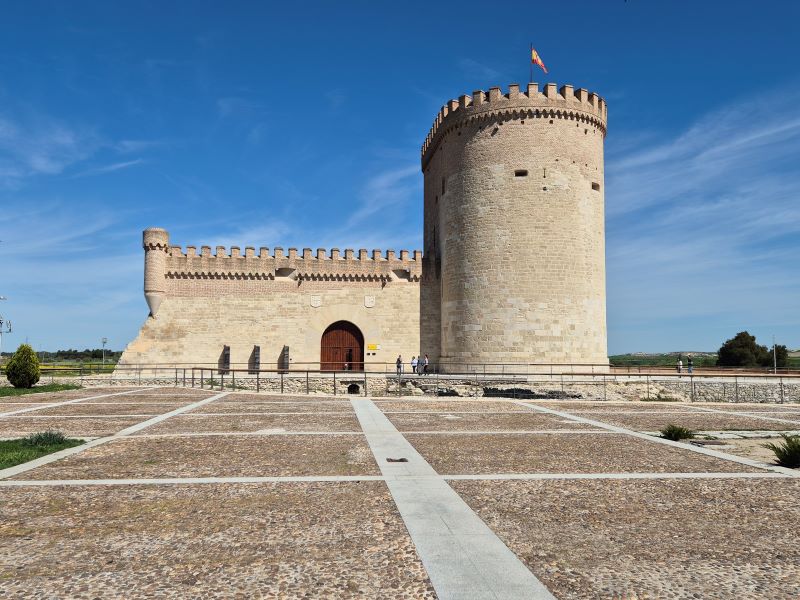
Its origin dates back to the 11th century when King Alfonso VI reigned and granted a charter to the town of Arévalo.
From that precise moment, there are a large number of references to this place in various documents. At first, it depended on the Crown of Castile, so it was common to see various members of the royal family visiting the town.
It was not until the mid-15th century that the existence of this castle in Arévalo became known. Together with those of Tordesillas, Medina del Campo and Sigüenza, it was one of the places where Doña Blanca de Borbón, wife of King Pedro I of Castile, was imprisoned.
However, the most important reforms in its history came at the beginning of the 16th century, once the castle was in the hands of the Catholic Monarchs. One of the most significant changes that this fortress underwent was its layout, which changed from a square to a pentagonal shape. It was then decided that this place would have a very important function: to imprison illustrious prisoners.
There are many authors who claim that, after the death of John II of Castile, it was decided to imprison Isabella of Portugal, mother of Alfonso of Castile and the future Isabella the Catholic, in this place.
Church of San Miguel
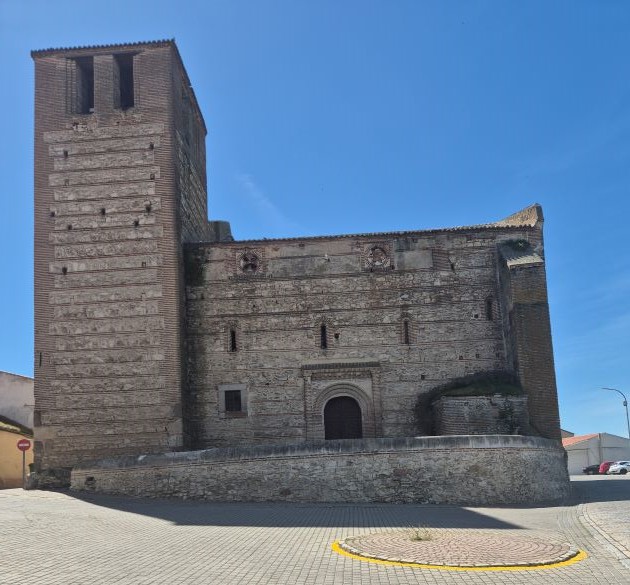
The church of San Miguel it´s a must in the things to do in Arévalo in Arévalo is located next to the medieval wall, in the northwest of the town.
It was built between the 12th and 16th centuries by the Montalvo lineage and is one of the best churches in Arévalo in the Mudejar style, an art resulting from the artistic cultures of Christians and Muslims. This union of cultures made it possible to create a unique architectural and construction style, especially in the area of Castilla y León.
The church is made of masonry (a traditional system where walls are erected by hand without any support, order or size) with brick walls and its construction was Romanesque-Mudejar, although today only the chevet, the perimeter walls and the tower remain.
The Church of San Miguel in Arévalo has been declared an Asset of Cultural Interest and was the tomb of important knights as well as a meeting place for them. The building is quite large and was reformed during different periods, with the flat chevet on the outside with pointed arches and geometrical shapes around the whole façade.
Already in the year 1250 there are references to this church as a parish church, although there is a great deal of mystery surrounding the actual date of construction.
This church has been closed to the public since 1911. It is of great artistic interest for being a great work of transition towards the Renaissance style .
Church of Santa María La Mayor
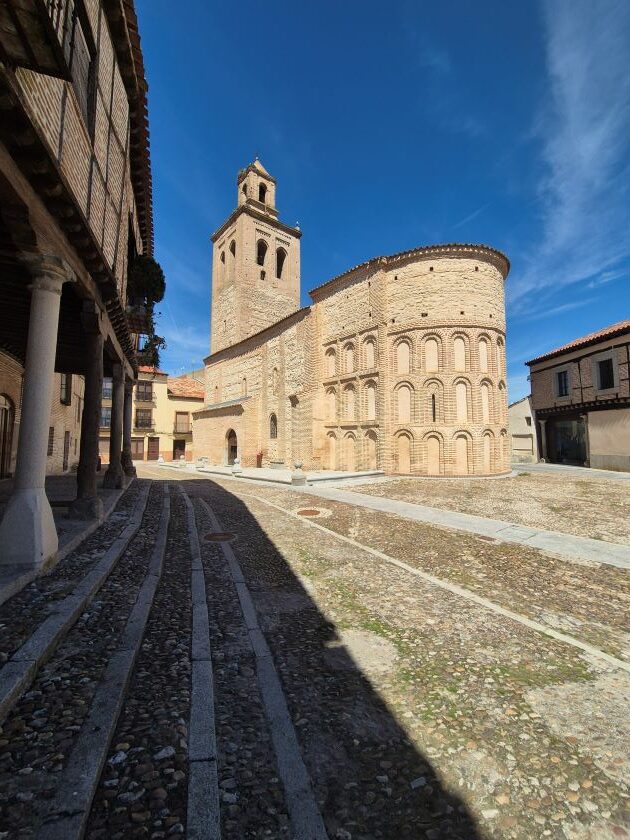
The Church of Santa María la Mayor is located in the Plaza de la Villa.
It is a Romanesque church in the Mudejar style built in the late 12th and early 13th centuries. This temple was restored in a very precarious way in 1969, and as a consequence of this in 1981 the roof collapsed. It is currently in perfect condition thanks to the restoration carried out subsequently. It is the foundation and burial place of the lineage of the Caballeros Briceños.
It is the work of a popular master whose style is related to the author of the paintings of San Justo de Segovia. The Pantocrator has a sphere in his left hand and is blessing with his right.
In this church are buried the remains of the Mayor of Casa y Corte, Rodrigo Ronquillo, together with his wife Teresa Briceño and their two children.
Arévalo History Museum
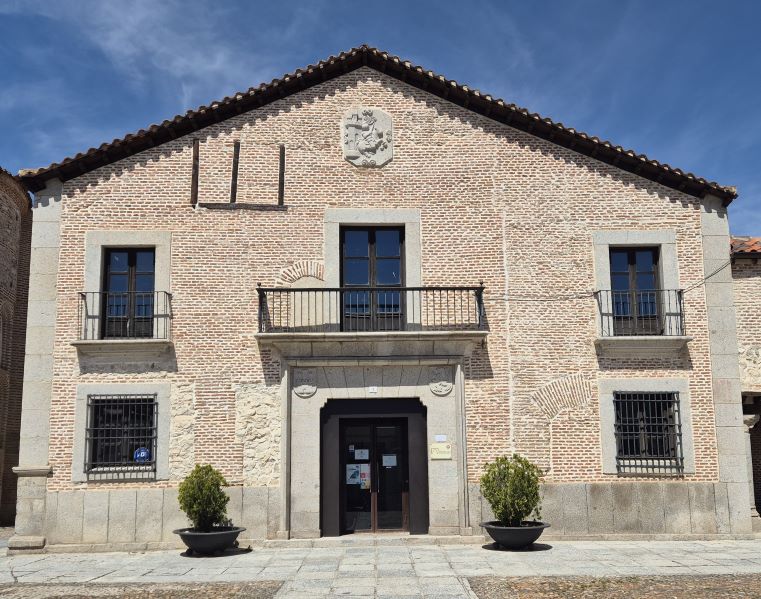
Another key point in the things to do in Arévalo is the building known as the Casa de los Sexmos (House of the Sexmos) , which was used to house the sexmeros (the representatives and voice bearers of all the villages, representing them before the law), to meet, to store the goods or belongings of the Land. Nowadays it has been converted into the Museum of History and is a must in the things to do in Arévalo.
The Treaty of Tordesillas was ratified in this building in 1494, and from its balconies sexmeros, monarchs and councillors watched bullfights and other festivities. In its old meeting room it conserves a beautiful coffered ceiling recently restored by the workshop school.
It currently has fossilised remains of turtles that have been found in the vicinity of the rivers Adaja and Arevalillo.
In the 19th century, the administrative organisation of the Land into Sexmos disappeared and its buildings became municipal property. Since then it has been used for different purposes such as municipal schools, municipal library, notary archive and workshop school. Since August 2011 it has housed the History Museum of the hings to do in Arévalo.
Plaza de la Villa
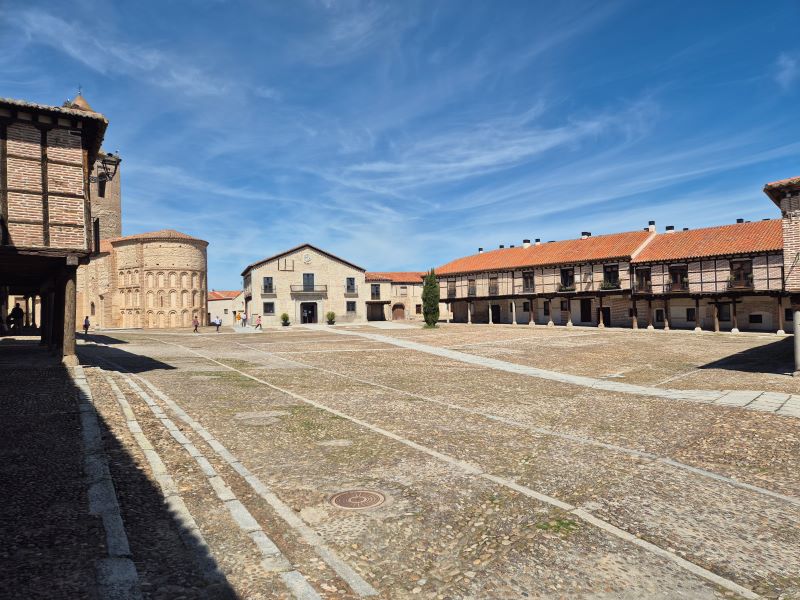
The main square to see in Arévalo is the Plaza de la Villa, which is a splendid group of half-timbered houses with brick infill and facades that are configured in the form of a colonnade.
It is amagnificent example of popular Castilian architecture and the nerve centre of the town in medieval times. With it, the town enjoyed a large public space, the scene of festivities, markets, solemn events and leisure activities, such as jousting and tournaments, cane games and bullfights in the old style.
It is flanked by the churches of St. Martin and St. Mary, both dating from the 12th century. In the space between the two, the square was gradually shaped by porticoed buildings built with the characteristic timber and brick and mud and brick framework, which were plastered until the middle of the 20th century.
The square was declared a National Monument in 1931, making it an important place to visit in Arévalo.
Church of San Martín
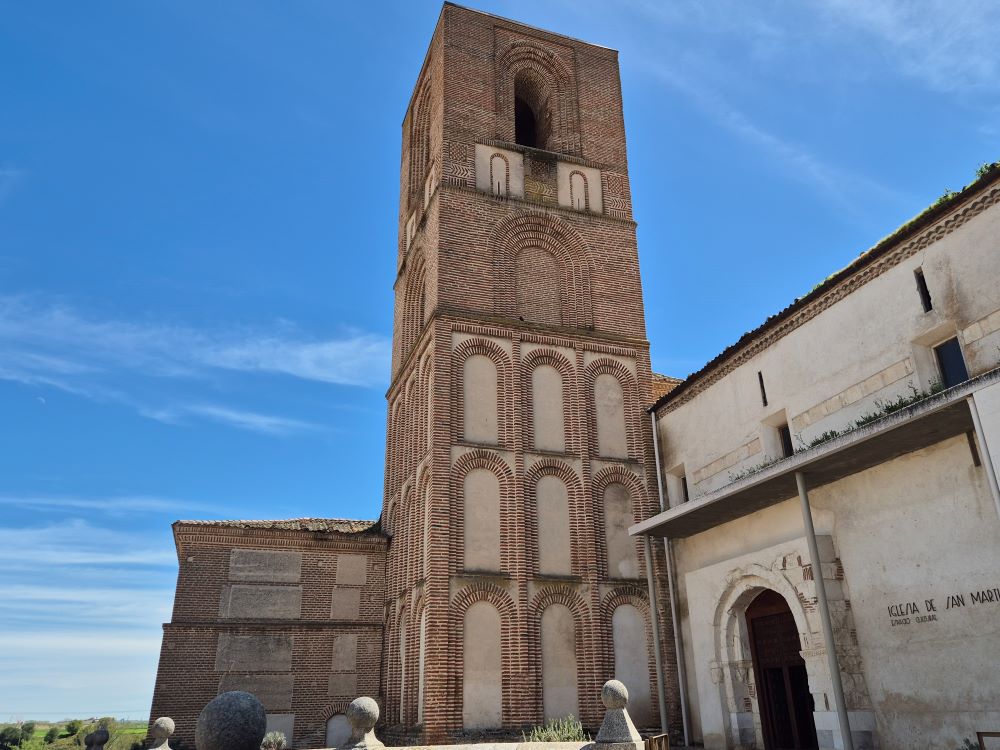
This is the only Romanesque church to see in Arévalo. The church of San Martín, better known as the Church of the two towers.
Inside, you can admire the most outstanding features , like mural paintings, which depict scenes from the Last Supper. Of its original Romanesque construction, only the towers and the porticoed gallery on the south side remain.
It has a magnificent repertoire of semicircular arches made of brick. It is divided into three storeys of whitewashed and blinded semicircular arches.
In the 12th century, the nave and the original chancel were built in limestone, with the so-called “chessmen” tower, so called because of the twelve panels that decorate it, being attached to the north wall. Together with the so-called “new” tower, built around 1200, they form a characteristic Mudejar ensemble in Arévalo.
It was one of the parish churches closed to worship in 1911 and was later used as a silo.
Plaza del Real
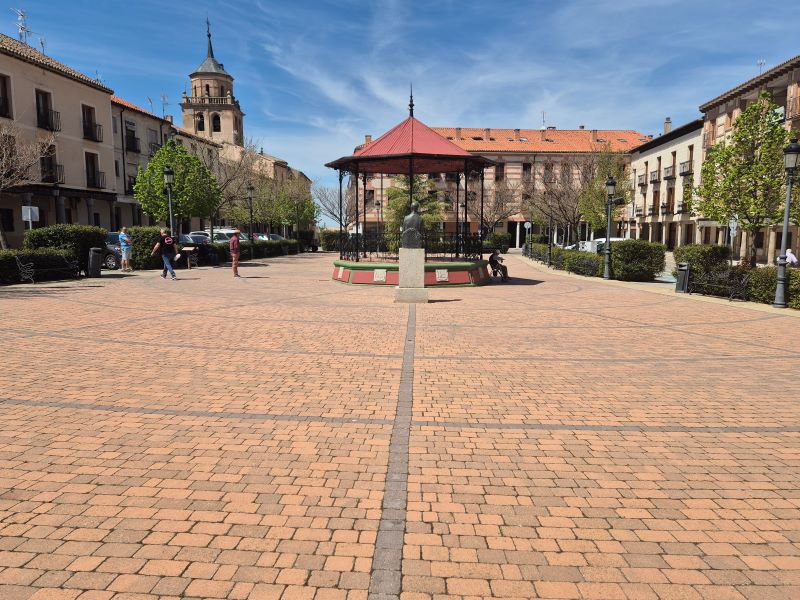
The Plaza del Real in Arévalo is so called because it was the site of the royal palace, which no longer exists. Here we find the town hall and the Alcocer gate. Behind it is the church of San Juan Bautista.
Don’t miss this must-see, an essential of the things to do in Arévalo
In the centre there is a green area with children’s playgrounds and a ” kiosk ” for musicians, from which performances are given during the fiestas, as well as sculptures that the town hall has dedicated to native figures who have stood out for their work.
Church of San Juan Bautista
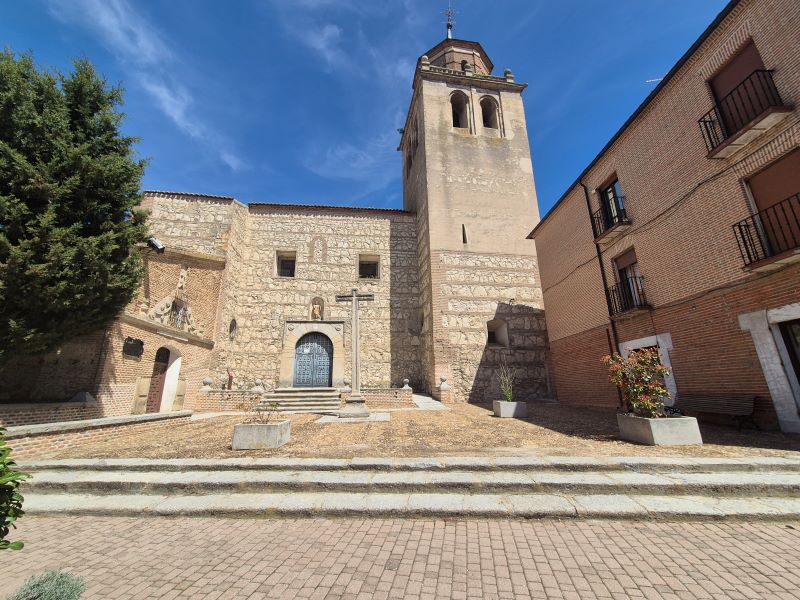
Also called Church of San Juan de los Reyes is a Romanesque Church of the XII and XIII centuries. Definitively, an interesting visit in the list of the things to do in Arévalo.
It is attached to the wall and is thought to have originally been a small Romanesque hermitage made of brick and later the building of the chancel that we see today in the church. In 1250 Gil Robles mentions it in the census with the definition of parish.
The Church of San Juan Bautista is very likely to have been the church of the Trastámara palace, later ceded by Queen Isabella at the end of the 15th century and reformed by the knights Altamirano and Sedeño. On the south doorway there is a sculpture of Saint John, now quite mutilated.
Plan your trip with the best things to do in Arevalo, like visiting this church!
Arch of Alcocer
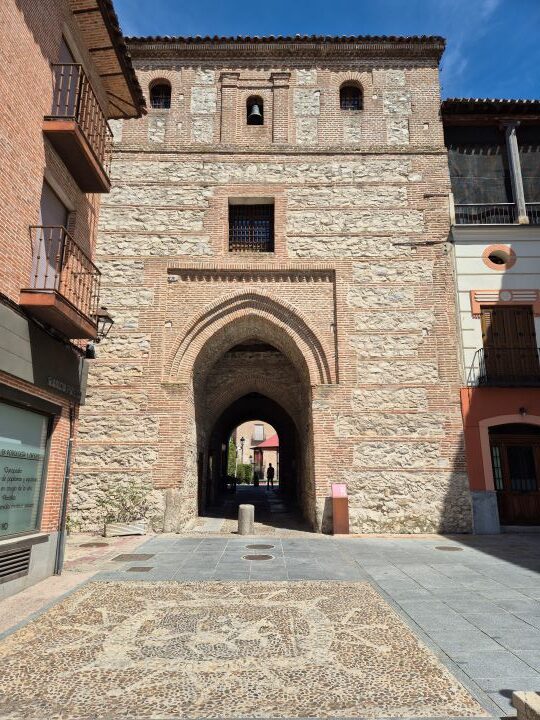
The Alcocer Gate is the main entrance and the only one that remains today of the old city walls to be seen in Arévalo, the construction of which began in the 12th century. This historic gate is an essential point of reference for those looking for things to do in Arévalo, as it forms part of the city’s rich medieval heritage.
The wall of Arévalo bordered the Arrabal on the south side and followed a natural route along the promontory of the rivers and their natural moats, connecting with Arévalo Castle, located to the north of the town. At the time, the wall had five gates, some of them with drawbridges, which added to its defensive character. Today, the Alcocer Gate remains an important testimony to this defensive system and is one of the most outstanding things to do in Arévalo.
The Alcocer Gate is notable for its large tower and several pointed arches, creating a tunnel that leads to the Plaza del Real, another key of the things to do in Arévalo. Its façade, with a triple archivolt arch and corner frieze, adds a unique architectural element. Over the gate, once stood the Alcázar, later rebuilt as the Town Hall. Today, the Arch houses the tourist office, where visitors can obtain information and maps to guide them in their exploration in the things to do in Arévalo.
Isabel La Católica Monument and Monument to the Suckling Pig.
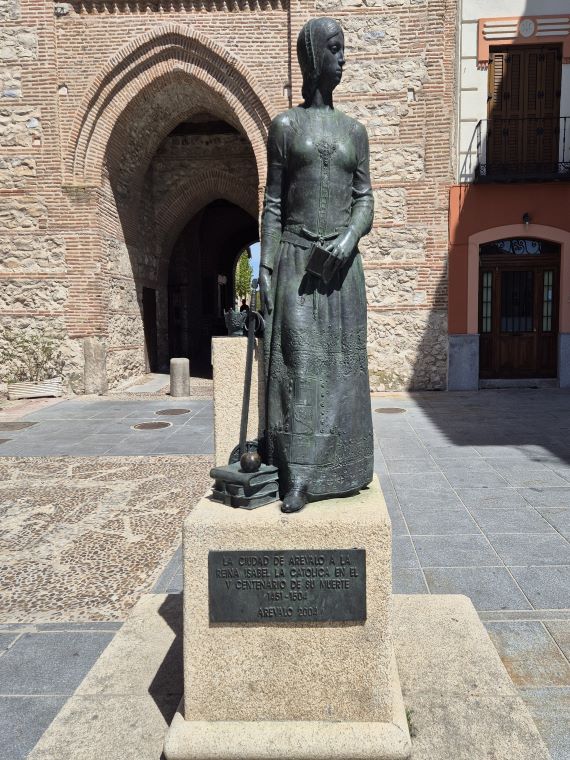
In the street parallel to the Plaza del Real, in a widening of the pavement when leaving the Arco del Alcocer, we see this bronze sculpture, present since 2004, in honour of the fifth centenary of the Queen’s death.
Arévalo has an episode in its history linked to Isabel la Catolica, as she lived, with her father and brother, in the now disappeared Royal Palace, built in the time of Enrique II, which was located in the Plaza del Real.
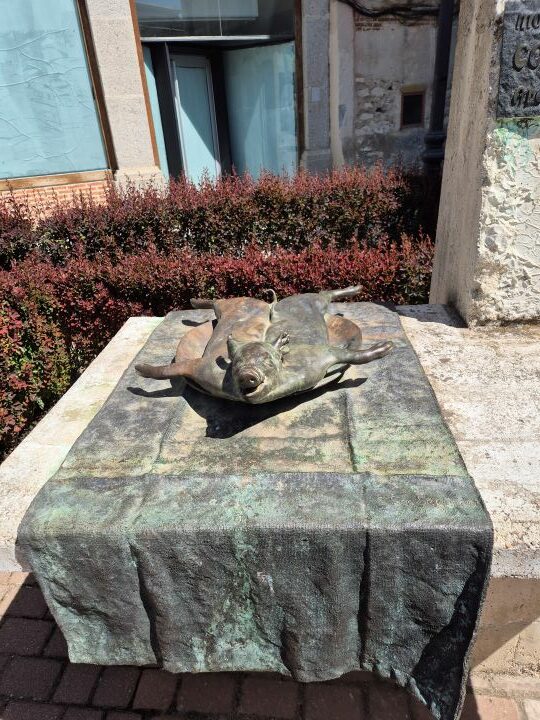
Another monument in the things to do in Arévalo is the one dedicated to the roast suckling pig ( also called “tostón asado” or “tostón” for short), a variety of roast suckling pig. In Spanish cuisine it is very popular in the land of Castile, the most popular variety being cochinillo de Segovia along with that of Arévalo.
Suckling pig and lamb have been part of Castilian cuisine since the invasion of the Roman Empire.
You can’t leave without including this in your things to do in Arévalo.
Santo Domingo de Silos Church
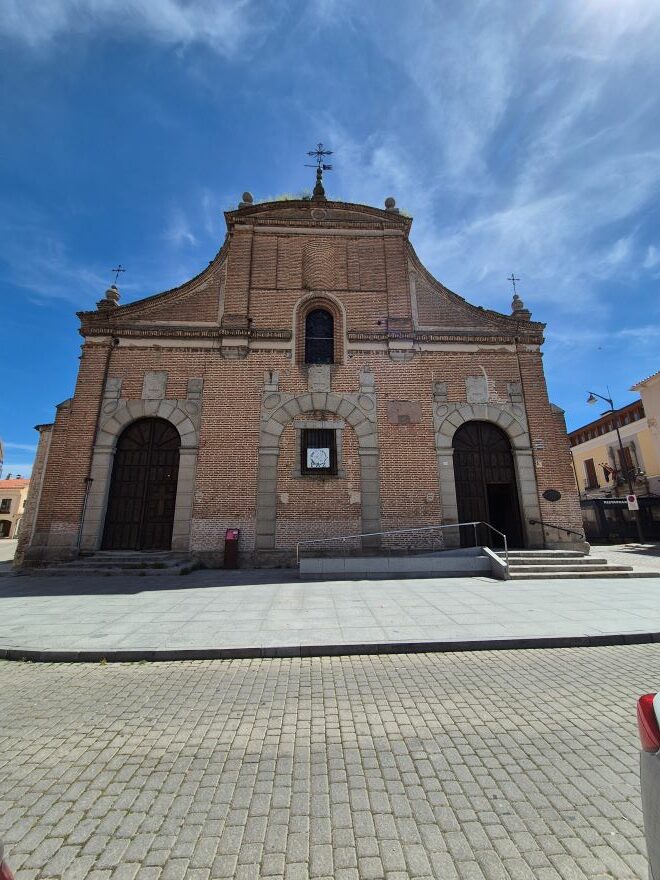
The Church of Santo Domingo in Arévalo is a jewel of Mudejar architecture with a slender apse. This temple, which is accessed through a triple-arched doorway and crowned with balls in the Escorial style, is an essential of the things to do in Arévalo for those who wish to admire the richness of its architectural heritage.
Already mentioned as a parish church in the year 1250, the Church of Santo Domingo has undergone several transformations due to reforms in the 16th and 18th centuries, but it still conserves important elements of its original Mudejar architecture. Amongst these, the most outstanding are the folded arches of the chancel, which follow the Toresano model, set on a solid masonry plinth. These details make it an essential point in the things to do in Arévalo.
The main façade, which dates from 1572, has two entrances leading to the interior of the church, with cushioned arches and coats of arms of Santo Domingo de Silos, which adds even more value to this important monument, key in the things to do in Arévalo. Today, the Church of Santo Domingo continues to function as a parish church, making it one of the key places to visit in Arévalo for visitors interested in its religious and artistic history.
An unmissable stop on your list of things to do in Arévalo.
I hope you liked the post, and don’t miss these things to do in Arévalo!
Arévalo and Isabella I of Castile connection.
Isabella I of Castile spent part of her childhood in Arévalo. During the early years of her life, Arévalo was one of the places where she lived with her mother, Isabella of Portugal, who suffered from mental health problems. The tranquillity of Arevalo and its relatively secluded environment made it a suitable place for his mother, far from the court and the political intrigues of the time. This period in Arevalo had a profound effect on the young Isabel, influencing her character and her view of the world.
During her time in Arevalo, Isabella received an education that was unusually complete for a woman of her time. She focused on religious studies, literature, history and languages, which provided her with a solid foundation for her future role as Queen of Castile.
Isabella would return to the town of Arevalo several times during her lifetime. The town served as a place of retreat and reflection in times of crisis or when she needed to escape the pressures of court.
Other nearby places to see in Arévalo
Once you have explored and discovered the main places in the things to do in Arévalo, there are many other nearby places worth visiting such as:
Avila: the walled city.
Olmedo: for Lope de Vega and El caballero de Olmedo.
Coca: history since the Bronze Age.
Medina del Campo: where Isabel I died and the famous castle of La Mota.
More things to do in Arévalo
If you are looking for things to do in Arévalo beyond its iconic monuments, there are a number of activities that will allow you to enjoy a complete experience in this historic city:
- Route around the viewpoints of Arévalo: A different way of discovering the city is through its viewpoints. Walk around the various panoramic points that offer privileged views of the old town, the river Adaja and the natural environment that surrounds Arévalo. It is ideal for those looking to capture the best photographs or simply enjoy the tranquillity and beauty of the landscape.
- Explore the Ribera del Adaja: A pleasant walk along the banks of the Adaja River will allow you to connect with nature and appreciate the historical importance of this watercourse. This walk is perfect for relaxing and getting to know the local flora and fauna. You will also find information panels that will allow you to learn more about the local ecology and the impact of the river on the development of the city. A must in the things to do in Arévalo.
- Tasting the local gastronomy: You can’t visit Arévalo without trying its star dish, roast suckling pig. There are several traditional restaurants offering this delicacy, but you can also enjoy other local products such as sheep’s cheese and local wines. If you want to explore the gastronomy beyond the restaurants, look for local markets where you can buy artisanal products. Eating good and local is truly an essential part of the things to do in Arévalo
- Cycling around Arévalo: For sports lovers, Arévalo offers cycling routes that connect with nearby villages and allow you to explore the Castilian countryside. Cycling along rural roads is an excellent way of discovering other charming spots around the city, combining active tourism and culture. Another key activity part of the things to do in Arévalo.
These activities offer a different perspective on the things to do in Arévalo, complementing its rich historical heritage with experiences that connect you with its natural and cultural environment.
Did you know all these things to do in Arévalo?
Traditional Things To do in Arévalo
Festivities of San Victorino, its patron saint. For several days, the town fills with colour and joy with events that include processions, bullfights and shows. If you are here for these dates its a must in the things to do in Arévalo.
Festival of the Three Cultures: A key of the things to do in Arévalo that celebrates the historical coexistence of Christians, Jews and Muslims, the Festival of the Three Cultures takes place every year and offers a variety of cultural activities.
Semana Santa: Semana Santa (Holy Week) is an intense and emotional religious observance, highlighted by its solemn processions. The lively re-enactments of the Passion of Christ are especially moving.
Remember that with DareMapp you can take a multitude of guided tours in an interactive way, a fun tourism around the main destinations.
What better way than to travel and discover while learning in a fun way? Visit our blog to discover other guided tours.
Visit our social networks and discover other things to do in Arévalo (and in other cities), as well as lots of tourism tips.
Remember that with DareMapp you can take a multitude of interactive guided tours, including many of these “Spain’s most famous routes” for fun sightseeing in the main destinations.
What better way than to travel and discover while learning in a fun way?


